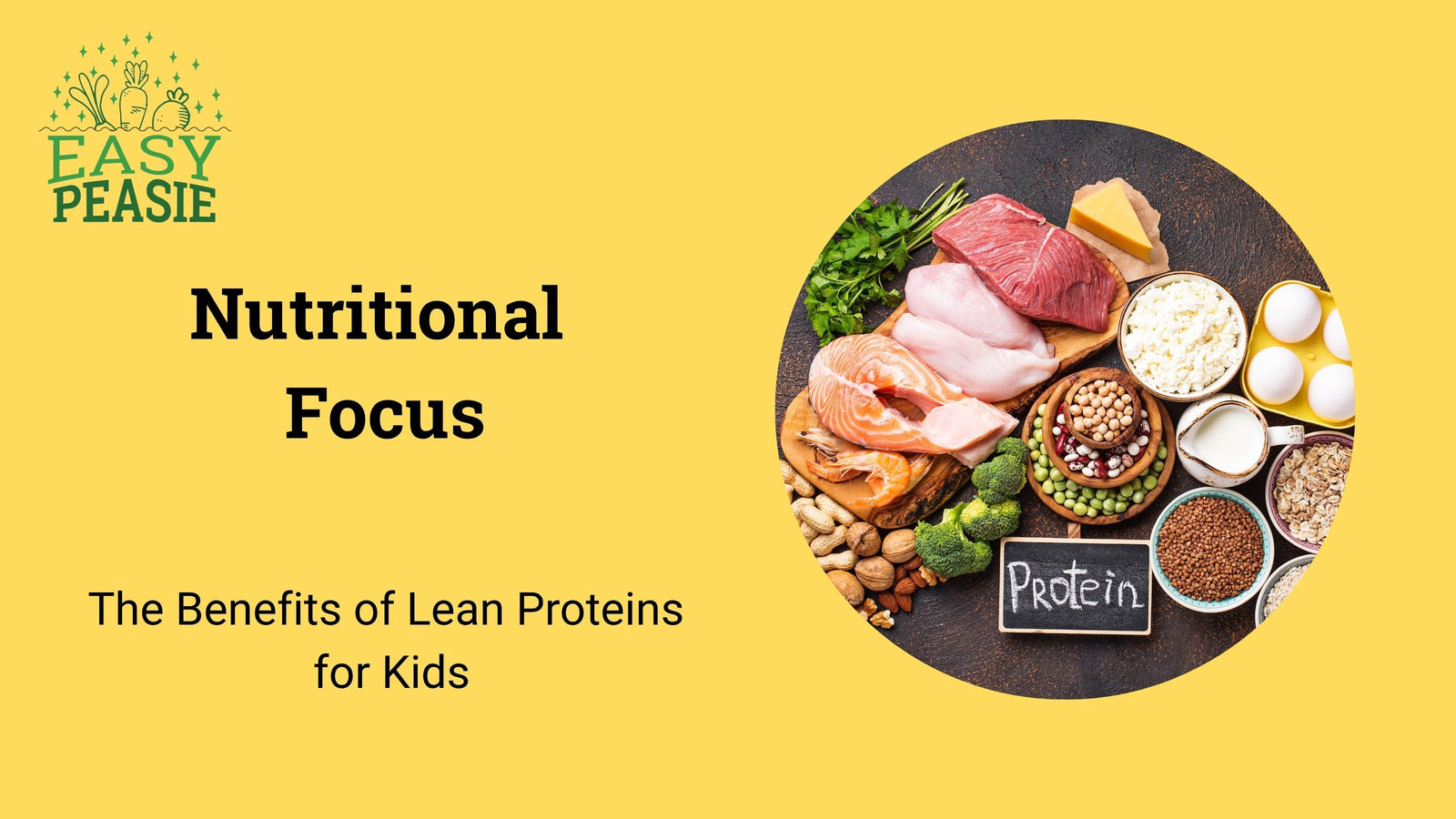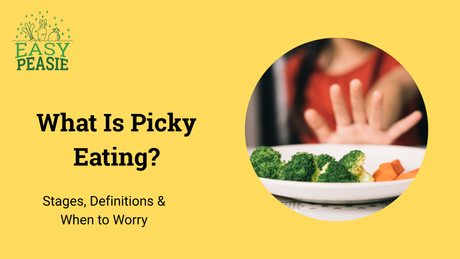The Power of Lean Proteins
Lean proteins are more than just a buzzword in the world of nutrition; they are a cornerstone of a healthy diet, especially for growing children. These proteins, known for being low in fat but high in essential nutrients, play a crucial role in a child's balanced diet. In this introduction, we'll delve into what lean proteins are and why they are particularly important for the young ones.
Building Blocks for Growth
Proteins are often referred to as the building blocks of life, and for a good reason. They are vital for the growth and repair of tissues, making them indispensable during the rapid growth phases of childhood. Lean proteins, in particular, offer these benefits without the added fats found in other protein sources, making them a healthier choice for developing bodies.
A Guide for Parents
The goal of this blog is twofold. Firstly, to illuminate the benefits that lean proteins offer to children, from supporting physical development to enhancing overall health. Secondly, to provide practical, easy-to-implement advice for parents.
Whether you're dealing with a picky eater or just looking for ways to enrich your child's diet, this guide will offer insights into how to effectively incorporate lean proteins into your family's meals. Let's embark on this journey to better understand and utilize the power of lean proteins for our children's health and well-being.
Understanding Lean Proteins
The Essentials of Lean Proteins
Lean proteins are a category of proteins that are relatively low in fat content. This group includes a variety of sources, both animal-based and plant-based. Animal-based lean proteins are often found in poultry (like chicken and turkey), fish, and lean cuts of beef and pork.
Plant-based options include legumes, tofu, tempeh, and certain grains. Each of these sources not only provides protein but also brings a unique set of nutrients to the table, making them versatile and beneficial in a balanced diet.
Comparison with Other Protein Sources
When we compare lean proteins to their fattier counterparts, the differences are significant, especially in terms of health implications. Traditional protein sources, such as red meats and full-fat dairy products, often come with higher levels of saturated fats and cholesterol.
Lean proteins, on the other hand, offer the essential amino acids needed for growth and development without the excess fat. This makes them a heart-healthy option, reducing the risk of developing chronic conditions later in life.
Importance in Kids' Diet
For children, the inclusion of lean proteins in their diet is crucial. During the years of rapid growth and development, proteins are essential for building muscle, supporting neurological development, and maintaining healthy skin, hair, and nails.
Lean proteins provide these benefits while also helping to maintain a healthy weight and prevent obesity, a growing concern in pediatric health. By incorporating lean proteins into meals, parents can ensure their children are getting the necessary nutrients for optimal growth and development, setting the stage for a lifetime of good health.
Nutritional Benefits of Lean Proteins
Muscle Growth and Repair: The Building Blocks of Development
Lean proteins are fundamental in promoting muscle growth and repair, especially in children who are constantly growing and active. Proteins are made up of amino acids, often referred to as the building blocks of the body.
These amino acids are crucial for the development of muscle tissue, aiding in both growth and the repair of muscle damage that can occur through everyday activities and play. Including lean proteins in a child's diet ensures they have the necessary components to support their physical development and strength.
Energy and Metabolism: Fueling Young Bodies
Lean proteins play a pivotal role in energy production and metabolism. Unlike fats and carbohydrates, proteins have a more complex structure, requiring more energy for digestion and absorption. This process, known as the thermic effect of food, means that consuming lean proteins can actually help in boosting metabolism.
Additionally, proteins are essential in the synthesis of enzymes and hormones, both of which are key players in the body's metabolic processes. For children, this means sustained energy levels throughout the day, supporting their natural curiosity and activity levels.
Satiety and Weight Management: A Tool for Healthy Eating
One of the most notable benefits of lean proteins is their ability to provide a sense of fullness or satiety. Proteins take longer to digest compared to carbohydrates, which means they stay in the stomach longer, leading to a prolonged feeling of fullness. This can be particularly beneficial for children, as it helps regulate their appetite and prevents overeating.
By incorporating lean proteins into meals and snacks, parents can help their children maintain a healthy weight and develop mindful eating habits. This aspect of lean proteins is not just about weight management but also about instilling a sense of body awareness and healthy eating patterns from a young age.
Sources of Lean Proteins
Animal-Based Sources: A World of Choices
When it comes to animal-based lean proteins, there's a wealth of options that can cater to various tastes and preferences. Chicken and turkey, especially their white meat portions, are classic examples of lean proteins that are both versatile and widely accepted by children.
Fish, particularly types like salmon, trout, and haddock, not only offer lean protein but are also rich in omega-3 fatty acids, crucial for brain development. These sources can be prepared in numerous ways – grilled, baked, or even incorporated into stews and soups – making them a hit for family meals.
Plant-Based Sources: Nutrient-Packed Alternatives
For families looking to diversify their protein sources or those following a vegetarian diet, plant-based proteins are an excellent option. Lentils, beans, and chickpeas are not only high in protein but also fiber, which aids in digestion and overall gut health.
Tofu, made from soybeans, is another versatile plant-based protein that can be used in a variety of dishes, from stir-fries to smoothies. These plant-based proteins are not just for vegetarians; they can be a part of everyone's diet, offering a range of nutrients and flavors.
Incorporating Variety: The Spice of Life and Nutrition
Variety is key in any diet, and this holds especially true for proteins. Mixing up protein sources ensures a wide range of essential amino acids and other nutrients, contributing to a well-rounded and balanced diet. It's beneficial to alternate between animal and plant-based proteins, as each offers unique nutritional benefits.
For instance, while animal proteins are complete sources of amino acids, plant-based proteins often come packed with additional fiber and antioxidants. Encouraging children to try different sources of lean proteins can also expand their palate and foster a positive relationship with a variety of foods.
Lean Proteins in Kids' Meals
Age-Appropriate Serving Sizes
Understanding the right serving sizes of lean proteins for children is crucial for their growth and development. For toddlers and preschoolers, a serving size might be as small as 1-2 ounces per meal, while older children and teenagers can have larger portions, ranging from 3-6 ounces, depending on their age, activity level, and appetite.
It's important to remember that children's stomachs are smaller, so they may need more frequent, smaller meals or snacks that include protein.
Kid-Friendly Recipes: Making Lean Proteins Fun
Lean proteins can be the star of many kid-friendly recipes that are both nutritious and delicious. For instance, turkey or chicken meatballs are a hit with kids and can be a fun way to introduce lean meat. Fish tacos with a mild white fish like tilapia, garnished with colorful veggies, make for an exciting and nutritious meal.
For plant-based options, lentil burgers or chickpea nuggets can be both fun to make and eat. These recipes can be a great way to involve kids in the kitchen, making mealtime an engaging and educational experience.
Creative Meal Ideas: Lean Proteins All Day Long
Incorporating lean proteins into every meal ensures a balanced diet throughout the day. For breakfast, a smoothie with Greek yogurt or a tofu scramble can be a protein-packed start. Lunch options could include a turkey or chicken wrap with plenty of veggies, or a bean salad for a plant-based twist. Dinner might feature grilled fish with a side of quinoa, or a hearty lentil stew.
Even snacks can be protein-rich; think hummus with veggie sticks, or a small handful of nuts (if there are no allergies). The key is to get creative and keep it colorful – children are more likely to try foods that look appealing and fun.
Addressing Common Challenges
Picky Eaters: Navigating Lean Proteins
Introducing lean proteins to picky eaters can be a delicate balancing act. The key is to start small and be patient. For instance, if your child is hesitant about trying chicken, begin by adding small, finely chopped pieces into familiar dishes like pasta or rice.
Gradually increase the size and visibility as they become more comfortable. Another strategy is to involve them in cooking, which can pique their interest and willingness to try new foods. Making food fun, like creating animal shapes with lean meat slices, can also be a game-changer.
Allergies and Dietary Restrictions: Inclusive Protein Choices
For families dealing with allergies or dietary restrictions, finding suitable lean protein sources can be challenging but not impossible. If meat is off the table, look to plant-based proteins like lentils, beans, and tofu, which are versatile and can be prepared in allergy-friendly ways.
For those allergic to soy or nuts, quinoa and seeds like hemp or chia can be excellent alternatives. Always read labels carefully and, when in doubt, consult with a dietitian to ensure you're meeting your child's nutritional needs.
Budget-Friendly Options: Lean Proteins That Won't Break the Bank
Incorporating lean proteins into your family's diet doesn't have to strain your budget. There are plenty of economical options available. Canned fish, like tuna or salmon, is a cost-effective and convenient source of lean protein.
Buying in bulk, choosing lesser-known cuts of meat, or opting for plant-based proteins like beans and lentils can also reduce costs. Another tip is to look for sales and stock up on freezable items like chicken or turkey. Remember, a little goes a long way with protein, so even smaller amounts can be satisfying and nutritious.
Wrapping Up: The Lean Protein Advantage
As we've explored throughout this article, lean proteins are more than just a dietary component; they're a cornerstone of your child's growth and development. From building and repairing muscles to aiding in energy production and metabolism, lean proteins play a pivotal role in ensuring your child's health and well-being. Whether it's animal-based sources like chicken and fish or plant-based options like lentils and tofu, the variety and flexibility of lean proteins make them an invaluable addition to any meal.
A Nudge for Nourishment
To all the parents navigating the complex world of childhood nutrition, remember that incorporating lean proteins into your child's diet can be a game-changer. It's not just about the immediate benefits but also about setting the foundation for a lifetime of healthy eating habits. If you're facing challenges, whether it's with picky eaters or budget constraints, know that there are strategies and options available to you. Lean proteins are versatile, and with a little creativity, they can become a staple in your family's meals.
Let's Share and Grow Together
Now, we'd love to hear from you! Your journey with incorporating lean proteins into your children's diets is invaluable, and your experiences could inspire and assist others in our community. Do you have a go-to lean protein recipe that your kids love? Or perhaps some tips and tricks that have worked for you? Share your stories and recipes in the comments below. Let's create a supportive space where we can all learn from each other and make the path to healthy eating a little easier and a lot more fun for our kids.





